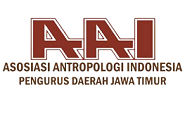The crucial role of international institutions to tackle child marriage issue
Downloads
Child marriage is a violation of children’s rights, and it violates international human rights conventions. Its practice remains high globally and has also increased in Nigeria and Indonesia. The efforts given by international institutions to address child marriage issues are certainly not lacking. Nevertheless, child marriage remains persistent in the global landscape. The prevalence of child marriage tends to be based on solid domestic reasons such as cultural and economic factors. This paper argues that the prevalence of child marriage globally occurs because of the absence of strict international policies to form international norms. This situation indicates the diffusion of norms from the international to the domestic level. Thus, the isomorphism theoretical framework is used to clarify the diffusion process of international norms condemning the practice of child marriage. Isomorphism theory explains that international institutions can set normative standards at the global level, which are then passed down to the regional, domestic, and individual levels. With that being said, international institutions play a crucial role in eliminating the implementation of child marriage. The authors used deductive analysis to utilize a structural approach that encourages a systematic explanation of the factors contributing to child marriage. With the existing theoretical framework, deductive analysis is meant to test the accuracy of isomorphism theory through an actual case study of international norm diffusion. Thus, deductive analysis will determine whether the norm diffusion process has been effectively distributed from the international to the individual level.
Asghari, S. (2019). Early marriage in Iran: A pragmatic approach. Journal of Human Rights Practice, 11(3), 569–588. https://doi.org/10.1093/jhuman/huz035
Bokaie, M., Khalesi, Z. B., & Ashoobi, M. T. (2021). Challenges and strategies to end child marriage. International Journal of Adolescent Medicine and Health, 33(3), 75–81. https://doi.org/10.1515/ijamh-2021-0017
Boxenbaum, E., & Jonsson, S. (2008). Isomorphism, Diffusion and Decoupling. In The SAGE Handbook of Organizational Institutionalism (pp. 78–98). 1 Oliver’s Yard, 55 City Road, London EC1Y 1SP United Kingdom: SAGE Publications Ltd. https://doi.org/10.4135/9781849200387.n3
Cai, Y. (2023). Policy isomorphism: a lens for understanding the influence of globalization on national education policymaking. In R. Tierney, F. Rizvi, K. Ercikan, & G. Smith (Eds.), International Encyclopedia of Education (Fourth Edition) (pp. 271–279). Amsterdam: Elsevier. https://doi.org/10.1016/B978-0-12-818630-5.01041-1
Draude, A. (2017). Translation in motion: A concept’s journey towards norm diffusion studies. Third World Thematics: A TWQ Journal, 2(5), 588–605. https://doi.org/10.1080/23802014.2017.1436984
Ethiraj, G. (2022). Law not sufficient to bring social change that will end child marriage. Retrieved from IndiaSpend website: https://www.indiaspend.com/indiaspend-interviews/law-not-sufficient-to-bring-social-change-that-will-end-child-marriage-803628
Girls Not Brides. (2021). Afghanistan. Retrieved from Girls Not Brides website: https://www.girlsnotbrides.org/learning-resources/child-marriage-atlas/regions-and-countries/afghanistan/
Girls Not Brides. (2023). Despite significant progress, we need to go 20 times faster to end child marriage by 2030, shows new data. Retrieved from Girls Not Brides website: https://www.girlsnotbrides.org/articles/despite-significant-progress-we-need-to-go-20-times-faster-to-end-child-marriage-by-2030-shows-new-data/
Hasudungan, A. N. (2022). Increasing child marriage in Indonesia during the Covid-19 pandemic: What causes it? Salus Cultura: Jurnal Pembangunan Manusia Dan Kebudayaan, 2(2), 151–161. https://doi.org/10.55480/saluscultura.v2i2.62
Human Rights Watch. (2022). Nigeria: Child Marriage Violates Girls’ Rights. Retrieved from Human Rights Watch website: https://www.hrw.org/news/2022/01/17/nigeria-child-marriage-violates-girls-rights
Kohno, A., Techasrivichien, T., Suguimoto, S. P., Dahlui, M., Nik Farid, N. D., & Nakayama, T. (2020). Investigation of the key factors that influence the girls to enter into child marriage: A meta-synthesis of qualitative evidence. PLOS ONE, 15(7), e0235959. https://doi.org/10.1371/journal.pone.0235959
Maswikwa, Richter, Kaufman, & Nandi. (2015). Minimum marriage age laws and the prevalence of child marriage and adolescent birth: Evidence from Sub-Saharan Africa. International Perspectives on Sexual and Reproductive Health, 41(2), 58. https://doi.org/10.1363/4105815
OHCHR. (1989). Convention on the rights of the child. Retrieved from United Nations website: https://www.ohchr.org/en/instruments-mechanisms/instruments/convention-rights-child
Parsons, J., Edmeades, J., Kes, A., Petroni, S., Sexton, M., & Wodon, Q. (2015). Economic impacts of child marriage: A review of the literature. The Review of Faith & International Affairs, 13(3), 12–22. https://doi.org/10.1080/15570274.2015.1075757
Philipose, A., Toure, R., & Verhulst, C. (2018). Child Marriage in West and Central Africa at a Glance (pp. 1–12). pp. 1–12. UNFPA & UNICEF. Retrieved from https://www.unicef.org/wca/media/2596/file
Sianipar, I. M. J. (2014). Legalisasi Deklarasi HAM ASEAN. Jurnal Hubungan Internasional, 3(1), 58–67. https://doi.org/10.18196/hi.2014.0047.58-67
UNFPA. (2012). Marrying Too Young: End Child Marriage. New York: United Nations Population Fund.
UNICEF. (2021). 10 million additional girls at risk of child marriage due to COVID-19 – UNICEF. Retrieved from UNICEF: For Every Child website: https://www.unicef.org/eap/press-releases/10-million-additional-girls-risk-child-marriage-due-covid-19-unicef
UNICEF. (2022). Child marriage. Retrieved from UNICEF: For Every Child website: https://data.unicef.org/topic/child-protection/child-marriage/
UNICEF. (2023). Global polycrisis creating uphill battle to end child marriage – UNICEF. Retrieved from UNICEF: For Every Child website: https://www.unicef.org/bangladesh/en/press-releases/global-polycrisis-creating-uphill-battle-end-child-marriage-unicef
UNICEF. (2024). UNFPA-UNICEF global programme to end child marriage. Retrieved from UNICEF: For Every Child website: https://www.unicef.org/protection/unfpa-unicef-global-programme-end-child-marriage
Wang, V. (2016). Ending child marriages – new laws bring progress but hurdles remain. Bergen: Chr. Michelsen Institute (CMI Insight).
Copyright (c) 2025 Indonesian Journal of Social Sciences

This work is licensed under a Creative Commons Attribution-NonCommercial-ShareAlike 4.0 International License.
1. The authors agree to transfer the transfer copyright of the article to the Indonesian Journal of Social Sciences effective if and when the paper is accepted for publication. The authors can download the Copyright Transfer Agreement here.
2. The legal formal aspect of journal publication accessibility refers to Creative Commons Attribution-NonCommercial-ShareAlike 4.0 International License (CC BY-NC-SA).
3. Every publication (printed/electronic) is open access for educational purposes, research, and library. Other than the aims mentioned above, the editorial board is not responsible for copyright violation.

IJSS by Unair is licensed under a Creative Commons Attribution-NonCommercial-ShareAlike 4.0 International License.




















